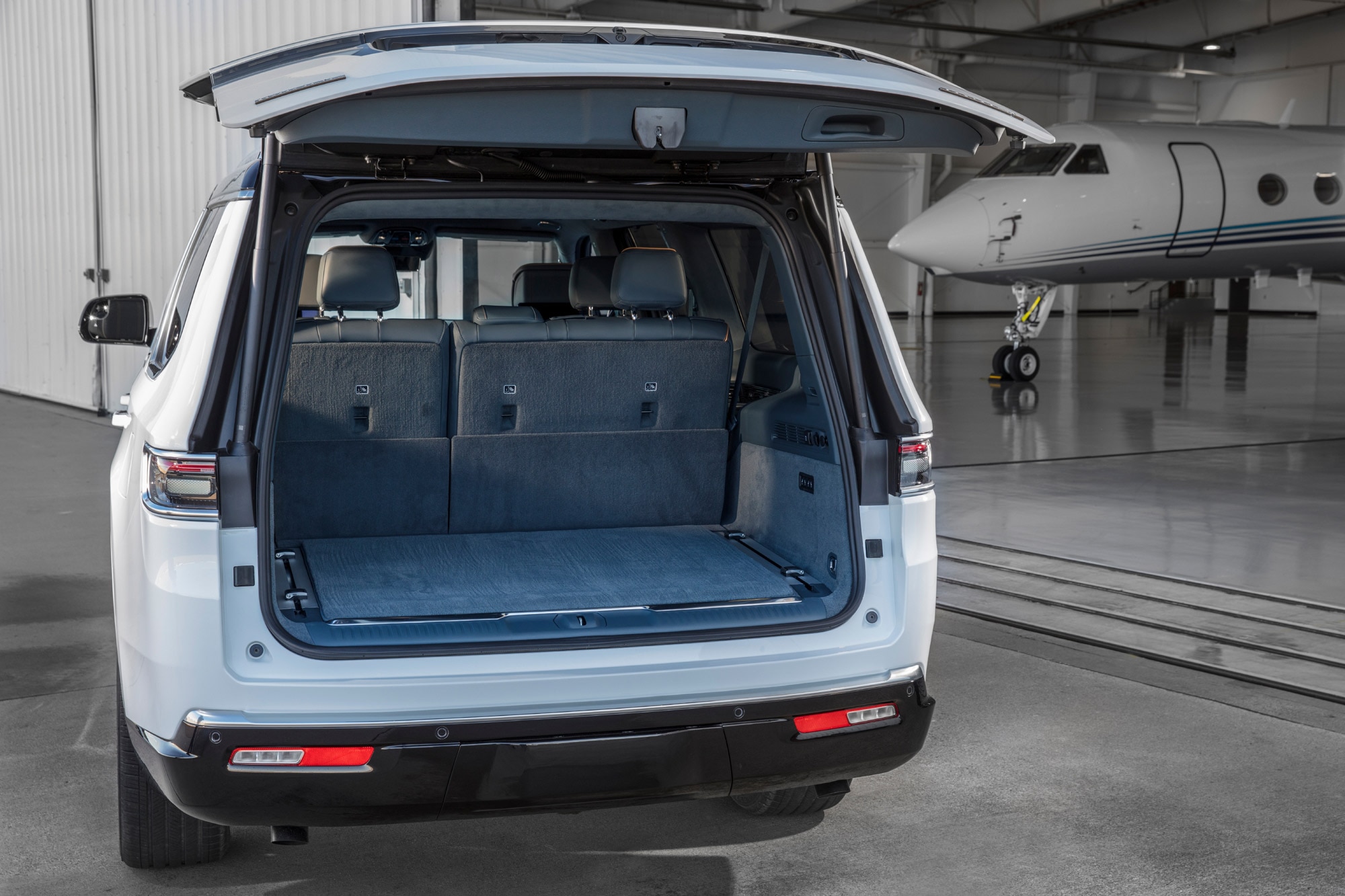Power Liftgates: Common Problems and Fixes
Here's what to do if your liftgate isn't opening or closing correctly.
 Jeep
Jeep
To help make loading cargo easier, many SUVs, vans, and wagons — such as the Jeep Grand Wagoneer — offer the convenience of power liftgates with one-touch or sometimes hands-free open and close capability. As with any feature that is used regularly, power liftgates can be prone to problems.
Even the most basic power liftgates rely on a series of components that slow the opening and closing action to prevent damage, including hinges, sensors, and struts. Through time and/or abuse, these components can wear, making it more difficult to use the gate or causing errors with the vehicle's onboard computers.
What to Do if Your Power Liftgate Is Not Working
If your power liftgate is either not shutting entirely or failing to open, one of the first things you can check (or get checked) is the fuse associated with the system. Some owner's manuals don't go into the detail necessary to identify individual fuses, so if you're uncomfortable relying on a third-party manual or the internet for guidance, this might warrant a trip to the dealer or a service shop.
Fuses are one of the easiest and least expensive fixes and should be one of your first checks when troubleshooting a power liftgate issue. Fuse box locations vary by car — many have more than one — so this is where your owner's manual may come in handy. It will likely list what features are controlled by which fuses.
Don't be surprised if a single fuse has been allocated to various features other than the liftgate. Keep in mind, though, that if you replace a fuse more than once in a short period of time it's wise to find the root cause of the issue.
What to Do if Your Power Liftgate Does Not Open to Full Height
Some power liftgate systems offer the ability to adjust the height to which they open. This helps shorter owners and people with physical challenges, as it limits the need to reach as high to close the gate. Vehicles equipped with this feature often have a height-control button in the cabin or an option in the infotainment system to make adjustments, so it's best to consult your owner's manual for instruction.
Many power liftgate systems rely on sensors located under the bumper to make sure they don't hit stationary objects or other people while opening, so checking for obstructions is a good first step in these situations. The sensor may also be dirty or misaligned. Sometimes it can be as simple as wiping off a bit of dirt with a damp rag.
You may want to try taking the car to an automatic wash that offers an underbody spray. If that doesn't work, it's likely a good idea to consult a professional to calibrate the liftgate sensors.
How to Deal With a Slow or Noisy Power Liftgate
Power liftgates rely on struts and other components to open and close, items that can attract dirt and grime. Over time, these parts can shed their factory lubrication and become noisy or slow to operate. In these situations, it's best to take the vehicle to a shop or dealer that can diagnose the issue and add lubrication where necessary.
The actual type of lubrication recommended by an automaker varies greatly. A dealer may have access to proprietary lubrication. Those moving parts can also be a challenge to access unless you're a pro.
While it might be frustrating and costly to lean on a dealer or repair shop for seemingly benign issues with your power liftgate, do-it-yourself information online and elsewhere is often crowdsourced and varies in quality. That might not be a problem for older SUVs that are out of warranty and heavily depreciated, but for newer models, it's best to check with a professional.
New-vehicle warranties cover issues with power liftgates while they are active, and many problems are simple and relatively inexpensive to fix, so it's better to spend a little upfront to avoid costlier repairs down the road.
Written by humans.
Edited by humans.
 Chris Teague
Chris TeagueAfter working in the technology and software industry for several years, Chris Teague began writing as a way to help people outside of that world understand the sometimes very technical work that goes on behind the scenes. With a lifelong love of all things automotive, he turned his attention to breaking news, writing new vehicle reviews, and detailing industry trends.
Related articles
View more related articles